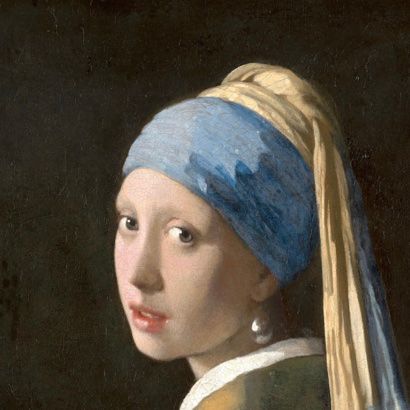The Vermeer mystery: reflections on the exhibition of the century
However, in 1995 there was an exhibition in The Hague devoted to Vermeer, which was quite remarkable, which I had the pleasure of seeing, since it already brought together 22 paintings, which had not taken place since 1696, when 20 paintings belonging to the wealthy rentier Van Ruijen had been exhibited and put up for sale as part of his estate.
Today, 28 of the 37 known paintings by the 17th-century master Vermeer are on display from February 10, 2023 to June 4, 2023 at the renowned Rijksmuseum in Amsterdam.
All the tickets for the exhibition sold out in just a few days, which again created an incredible buzz!
But why?
Besides the fact, that the press agent of Mr. Vermeer is very efficient, and that everyone wants to "do the exhibition", God knows I hate this expression...
No, seriously, we can ask ourselves what is the real reason?
Vermeer was always an artist who knew how to maintain the mystery.
The mystery remains what is inaccessible to human reason, what is of the order of the supernatural, the hidden, the unspeakable.
Well, here we are at the center of our idea: each of us, thanks to this unique exhibition, will try to pierce the Vermeer mystery, taking with him an ounce of mystery.
Before looking at Vermeer's painting, it is important to note that the exhibition brings together 28 paintings by Vermeer from seven countries around the world, including the United States, France and Japan.
It took seven years of diplomacy to organize. Securing loans of this value was already mission impossible before 2020 - no museum will part with a Vermeer unless the request is truly, legitimately made - and the pandemic and the Russian invasion of Ukraine only added to the costs and logistical trials.
Quite a feat, considering that only 37 paintings are generally attributed to the artist, who lived from 1632 to 1675 in the city of Delft.
Let's quickly return to Vermeer in his century, the 17th century:
Unlike his contemporaries, Vermeer (1632-75) did not paint in order to sell, nor in search of any glory outside his city, which is Delft, I remind you.
He made a living from his art, but remained very discreet, father of 15 children, his life punctuated by prosperous periods, and others more difficult.
Born into a family of merchants, his father was an art dealer who unfortunately ended up ruined.
Vermeer was an artist but also an art dealer and a recognized expert.
Nevertheless, Vermeer suffered from 1672, like so many others, from the great economic crisis of the time, following the double attack of the country: by Louis XIV on one side and by the English fleet on the other.
The art market was of course relegated to secondary considerations, and Vermeer died ruined in 1675. He was only 43 years old, leaving his wife and children penniless.
Vermeer's painting fell into oblivion with the artist's death, and remained neglected until the 19th century.
Why would you ask me?
Well, as today, it must be understood that his painting no longer corresponded to the fashion, the young patrons being more focused on historical and religious painting than on the genre painting practiced by Vermeer.
Fashions make and break artists' reputations, this has always been and still is the case.
It was an art historian, Théophile Thoré, who brought our Vermeer back to the forefront in the 19th century, to be highlighted at the beginning of the last century our beautiful 20th century.
By conquering fame at the turn of the twentieth century, Vermeer is also unanimously appreciated by artists, in literature as well as in painting and cinema. Renoir was a fan of The Lacemaker, and Dalí offered his own version of it and View of Delft, described by Proust as "the most beautiful painting in the world" and is, according to Pissarro, "a masterpiece that comes close to the Impressionists".
Vermeer's painter intrigues, by its intimist side: Vermeer's work is essentially composed of intimist scenes and interiors.
But what makes him an incomparable artist, is the treatment of light, having a very particular rendering on the perspective.
The mystery then takes its place, but few elements at the time are available, putting in track many forgers who take advantage of this to put on the market false paintings.
I open a parenthesis on this subject and invite you to read a book that I read several years ago, "the double life of Vermeer" by Luigi Guarnieri which tells the story of Han Van Meegeren, a traditionalist painter born in the Netherlands in 1889, who, tired by the criticism of his time, decides to take revenge in a grandiose way and realizes several Translated with www.DeepL.com/Translator (free version)


